In the third phase of India’s Swadeshi movement, one of the country’s leading industrialists decided to build a grand temple, from Indian money, in the nation’s capital. Mahatma Gandhi ensured the temple was open to all castes.

Gandhiji’s footsteps are scattered across Delhi, and in the places he touched are the glimpses of the man, his vision for India, his steadfast commitment to what he believed was right.
On his 150th birth anniversary, we look at five places in Delhi associated with the Father of the Nation that you should know about.
Laxminarayan Temple
Laxminarayan Temple on Mandir Marg in Delhi was built by industrialist Baldeo Das Birla, along with his son Jugal Kishore Birla, between 1933 and 1939.
 The Laxminarayan temple on Mandir Marg is also called the Birla temple. (Photo courtesy: delhitourism.travel)
The Laxminarayan temple on Mandir Marg is also called the Birla temple. (Photo courtesy: delhitourism.travel)
The beautiful temple in the middle of Delhi was an assertion of Indian identity, at the time when Mahatma Gandhi was shaping the ‘Swadeshi’ thought as a powerful tool of resistance against the British. Fittingly, Gandhi was asked to inaugurate the temple. He agreed, but on one condition — people of all castes would be allowed entry into the temple.
Also Read | Gandhiji never left us, we left him. He is with us, but are we with him?
Story continues below this ad
The Birlas accepted the condition, and thus modern India got a grand temple in which people of all castes are allowed to worship their God.
Kasturba Kutir
This small two-storey house, tucked away in Kingsway Camp in Delhi, is where Mahatma Gandhi had stayed with his wife Kasturba Gandhi and son Devdas Gandhi on his visits to Delhi in the 1930s and 40s. The house is now one of the few museums dedicated to ‘Ba’ in the country.
Long neglected, the house was renovated and inaugurated as a museum on July 7, 2017 by then Vice-President of India Hamid Ansari.
Also Read | From protest to governance
The simple structure has preserved a few articles used by Ba — a lantern, a copy of the Gita, a charkha. On the walls are her pictures and stories from her life, that help give a firmer idea of the person who was always ‘Bapu’s wife’.
Story continues below this ad
 The house was renovated and inaugurated as a museum on July 7, 2017 by then Vice-President of India Hamid Ansari. (Express photo/Yashee)
The house was renovated and inaugurated as a museum on July 7, 2017 by then Vice-President of India Hamid Ansari. (Express photo/Yashee)
They show how she entered public life alongside her husband — in South Africa, when a law was passed declaring marriages of Indians solemnised in India void, Gandhi was panning a protest against it. According to the story painted on the wall, Kasturba asked her husband: “What do I lack that you think I can’t go to jail?” She then joined the protest, playing an active part in mobilising Indian women in South Africa.
Bapu Asharm, Valmiki Mandir
When Gandhi came to Delhi in 1946, he chose to stay at the Harijan Basti in Gole Market. In the compound of the Valmiki Mandir here still stands Bapu Ashram, where Gandhi not just lived, but also taught English and Hindi to children and adults of the Valmiki community.
Also Read | The many notoriously reticent descendants of the Mahatma
Inside the small neat structure of Bapu Ashram, one can see the blackboard Gandhi used for his classes, half-hidden behind his portrait. On the walls are pictures of Sardar Vallabhbhai Patel, Mohammad Ali Jinnah and other important leaders, who came here to visit him during his 214-day stay, from April 1, 1946, to June 10, 1947.
Story continues below this ad
 The Bapu Ashram inside the compound of the Valmiki Mandir in Gole Market. (Express photo/Yashee)
The Bapu Ashram inside the compound of the Valmiki Mandir in Gole Market. (Express photo/Yashee)
In 2014, Prime Minister Narendra Modi launched the Swachh Bharat campaign from here.
Qutbuddin Bakhtiyar Kaki dargah
Three days before he was shot dead, on January 27, 1948, Mahatma Gandhi held his last public address at the shrine of Sufi saint Qutbuddin Bakhtiyar Kaki in Mehrauli.
The Partition violence was refusing to abate, Delhi was overflowing with refugees. During the annual Urs held at the dargah — a tradition observed for centuries — there were few Muslims to mark the occasion.
 Mahatma Gandhi addressing the crowd at Mehrauli Dargah. (Source: Express photo)
Mahatma Gandhi addressing the crowd at Mehrauli Dargah. (Source: Express photo)
In this scenario, Gandhi held a prayer meeting at the dargah. He had also requested Pandit Jawaharlal Nehru to repair the dargah, damaged in communal violence — a wish that was fulfilled after Gandhi’s assassination.
Story continues below this ad
Also Read | Gandhi Jayanti 2019: Artists across generations find ways to connect with, question Bapu through their work
Historian Rana Safvi says: “I remember Gandhiji’s words, ‘Our ability to reach unity in diversity will be the beauty and the test of our civilisation’. They are as relevant today as they were when he said it. He was a devout Hindu who respected all religions and fought for their rights. His visit to Qutub Saheb’s dargah on the occasion of his Urs showcases our pluralism.”
Gandhi Smriti
A monument that will always have to be mentioned when talking of Gandhi and Delhi is Birla Bhavan — now Gandhi Smriti — where he spent the last 144 days of his life, and where, on January 30, 1948, he was shot dead by Nathuram Godse.
There is much to see and learn at Gandhi Smriti, maintained well perhaps on account of the number of foreign tourists it gets each year.
Story continues below this ad
 Where Gandhi fell to Godse’s bullet. (Express photo/Yashee)
Where Gandhi fell to Godse’s bullet. (Express photo/Yashee)
But impossible to look away from are the footsteps tracing Bapu’s last journey, as he walked out of the house to the prayer ground, to the spot where he would be killed.
The walls of the museum inside are lined with Gandhiji’s pictures, quotes, scenes and stories from his life.
One such picture bears a 1947 quote by him: “Even if I am killed, I will not give up repeating the names of Rama and Rahim, which mean to me the same God. With these names on my lips, I will die cheerfully.”
Also Read | Valmiki Basti five years on: ‘Swachh Bharat has improved colony, not our lives’

 The path Gandhi took from Birla House to the prayer ground where he was shot dead has been recreated at Gandhi Smriti. (Express photo/Yashee)
The path Gandhi took from Birla House to the prayer ground where he was shot dead has been recreated at Gandhi Smriti. (Express photo/Yashee)
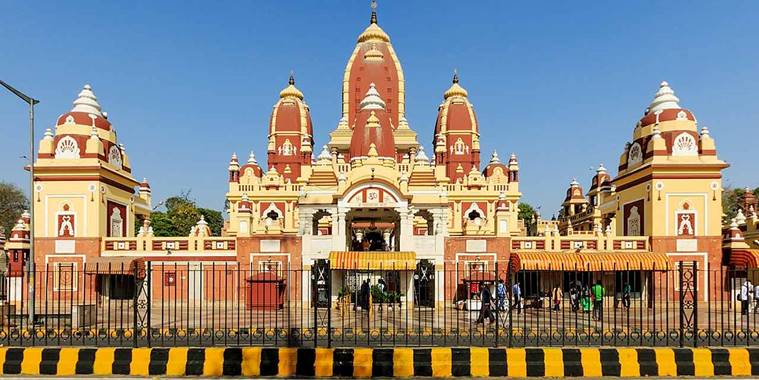 The Laxminarayan temple on Mandir Marg is also called the Birla temple. (Photo courtesy: delhitourism.travel)
The Laxminarayan temple on Mandir Marg is also called the Birla temple. (Photo courtesy: delhitourism.travel)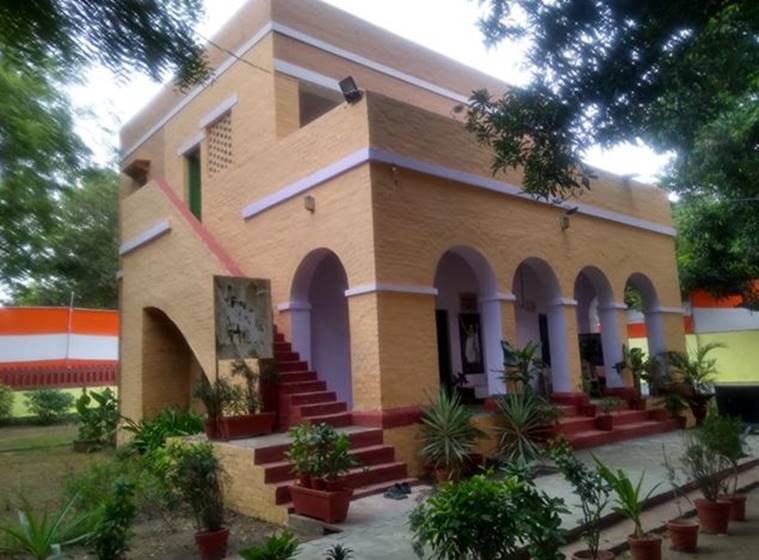 The house was renovated and inaugurated as a museum on July 7, 2017 by then Vice-President of India Hamid Ansari. (Express photo/Yashee)
The house was renovated and inaugurated as a museum on July 7, 2017 by then Vice-President of India Hamid Ansari. (Express photo/Yashee)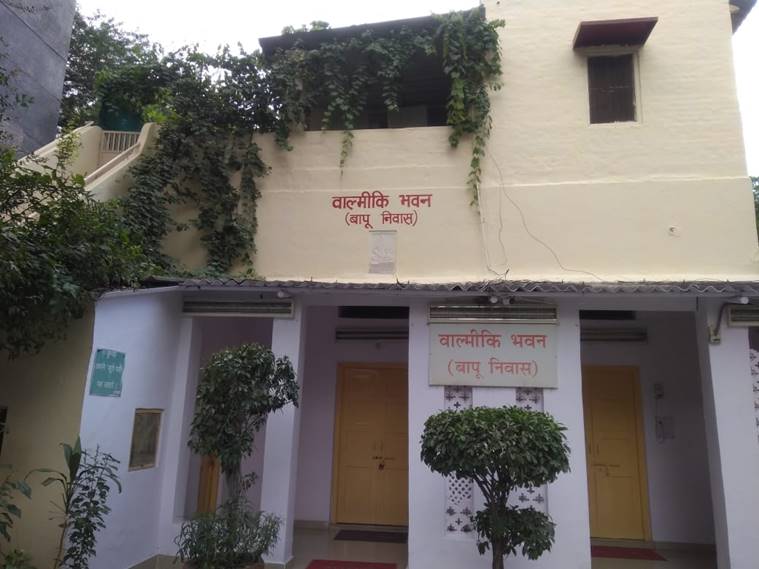 The Bapu Ashram inside the compound of the Valmiki Mandir in Gole Market. (Express photo/Yashee)
The Bapu Ashram inside the compound of the Valmiki Mandir in Gole Market. (Express photo/Yashee)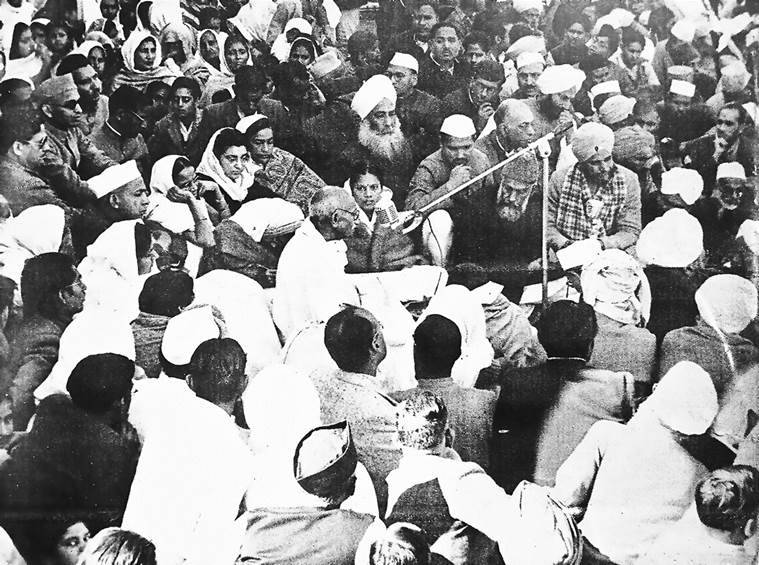 Mahatma Gandhi addressing the crowd at Mehrauli Dargah. (Source: Express photo)
Mahatma Gandhi addressing the crowd at Mehrauli Dargah. (Source: Express photo)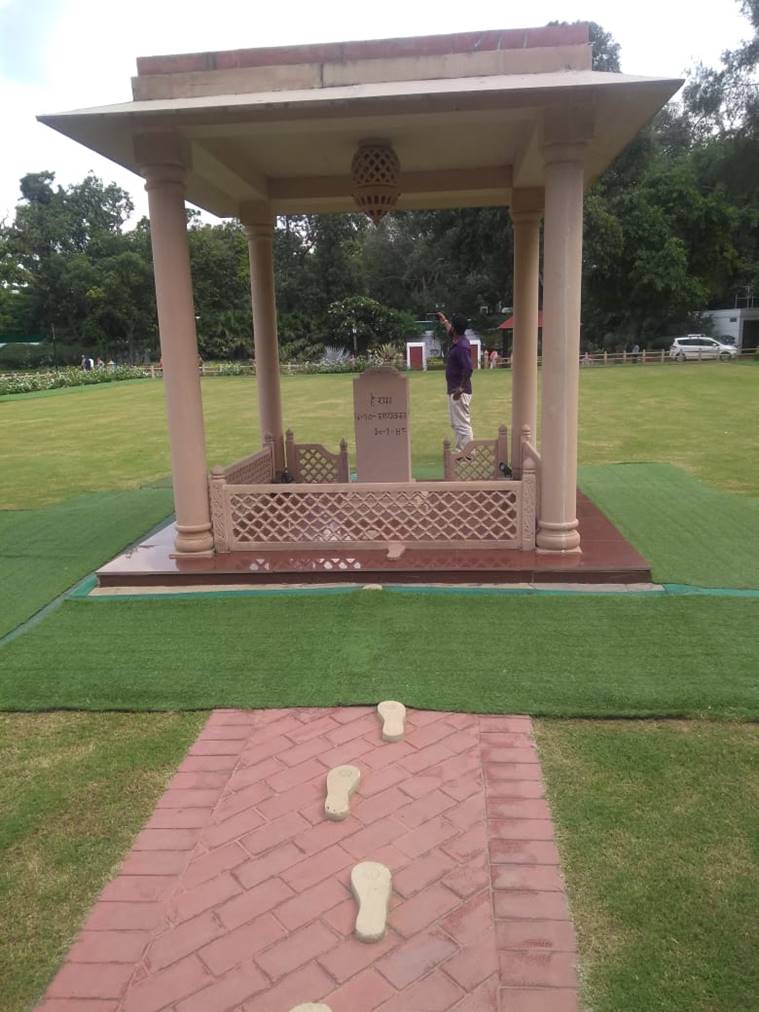 Where Gandhi fell to Godse’s bullet. (Express photo/Yashee)
Where Gandhi fell to Godse’s bullet. (Express photo/Yashee)





